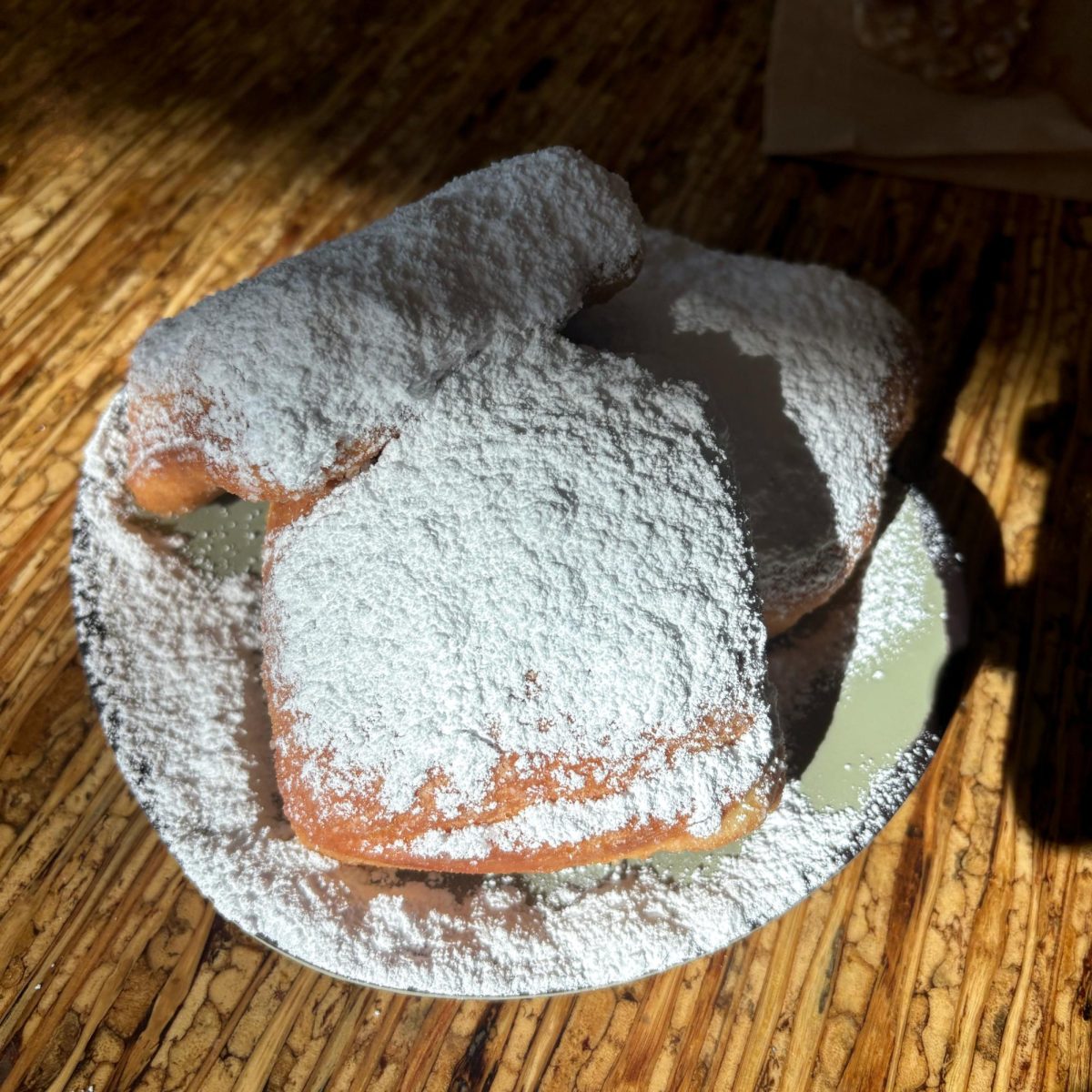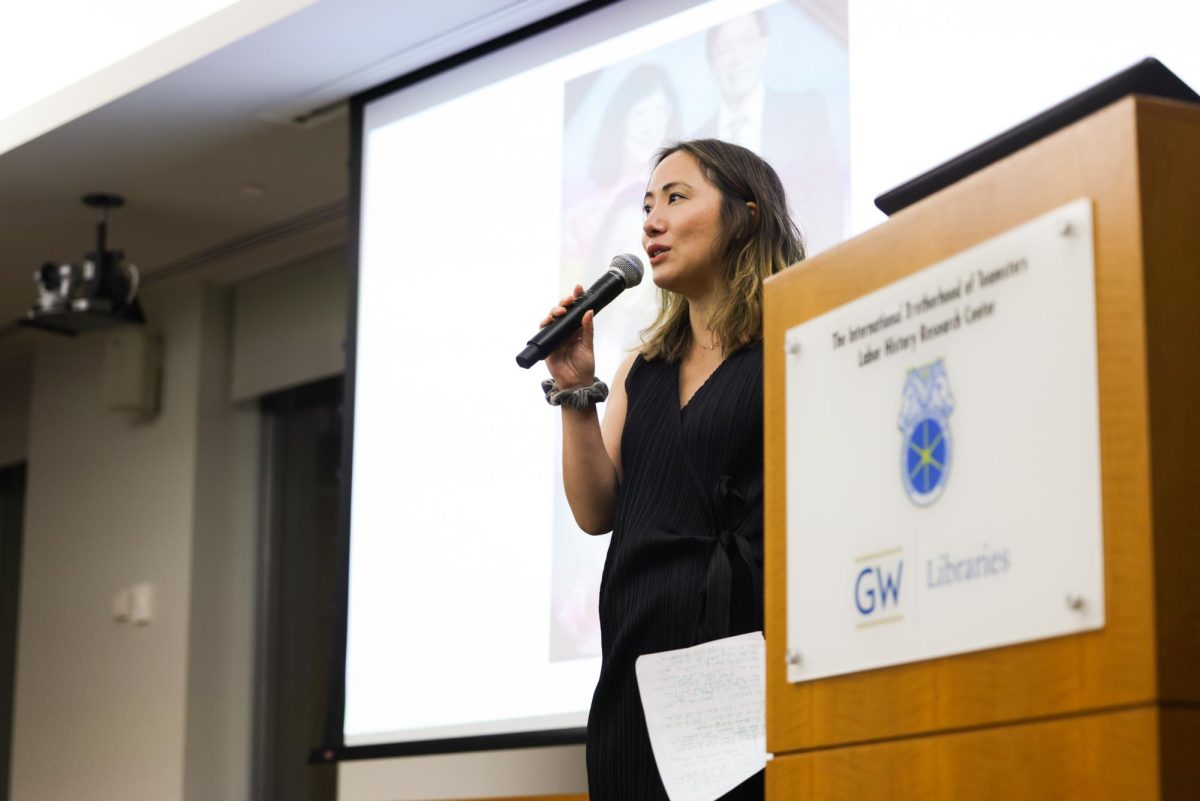The brick-red exterior of the Renwick Gallery on 17th Street and Pennsylvania Avenue may appear the same as it did two years ago before it closed for renovations, but viewers entering into the newly re-opened building might be surprised by the modernized interior.
For GW’s art and museum studies students, the gallery, which showcases both contemporary and classic American art, is a new resource, whether they want to intern, work at the museum through GW’s work-study program or just learn more about the history of art in D.C.
The upgraded gallery sets itself apart from the many other museums in the District with its opening exhibit, “WONDER,” which features large-scale installations.
Bibiana Obler, an associate professor of art history, said that she used to send her students to the exhibits in the gallery frequently and is eager to begin incorporating the museum into her curriculum again.
Obler said that a few weeks after the opening, she plans to take graduate students in her seminar on contemporary craft – one of the largest collections in the gallery – on a Renwick trip, where she said they will be speaking with exhibit curators in person.
“For me, the Renwick is relevant to exactly what I teach, so there are exhibitions that I will be sending my students to since they relate to my classes,” she said. She added that the walking distance to the Renwick will make classroom excursions convenient.
With the WONDER exhibit, Obler’s class will see innovative installations – made from commonplace materials like index cards, marbles, wood and rubber tires – by nine different contemporary artists.
Per the museum guide, the installations are meant to turn the building itself into a work of art and create a sense of awe in the viewer when they come across new art, much like viewers felt in the 1800s when the building was the only art museum in the country.
One such installment, entitled “Middle Fork (Cascades),” involves a large, hollow, wooden sculpture in the shape of a tree suspended from the ceiling. Artist John Grade made the structure by creating a plaster cast of a hemlock tree and then using a half-million pieces of reclaimed cedar to form a new tree with the same colors and contours as the hemlock. The piece takes up a whole room in the gallery, with viewers having to maneuver carefully around the jutting branches.
Another installation spreads across the ceiling of one of the larger rooms of the gallery. Made of red, orange and yellow knotted fibers, the net-like fabric is spread out in a pattern that is meant to mimic the map of energy released during the Tōhoku earthquake in Japan in 2011.
Obler also said that through internships and work-study programs at the museum, the Renwick has provided GW art students with hands-on experience curating.
This October, the Renwick hired GW freshman Robert O’Shaughnessy through GW’s work-study program.
O’Shaughnessy said he mainly works on providing technical support and expertise for events and concerts put on at both the Smithsonian American Art Museum and now, the Renwick. A political science major, O’Shaughnessy said that, going into the work-study job fair, he didn’t think he would end up working at a museum.
He changed his mind when he found out that through the program, he could continue working on the lighting skills he learned while doing tech theater in high school. He said working at the Renwick has given him a newfound appreciation for art.
“I never studied art history or did art but you go in there and everything is breathtaking,” O’Shaughnessy said. He added that he thinks that because the Renwick is so close to campus, it could draw in students who “maybe weren’t into art before.”
On opening day, O’Shaughnessy said he saw several non-art major GW students come in who were “fascinated” by the new exhibit.
The Renwick Gallery also has ties to the Corcoran Gallery of Art. Originally entitled “Corcoran’s Gallery of Art,” James Renwick designed the Renwick in 1859 to house William Wilson Corcoran’s private art collection and display it publicly. GW took over the Corcoran College of Art + Design and its gallery two years ago.
Kym Rice, the director and chair of the museum studies program at GW said that the museum will be part of the spring program. She added that most of the students in her freshman seminar class knew about the re-opening and were excited to see it.
“We will definitely do field trips,” Rice said. “There will probably be people who will talk about it and just use it as an example for the way museums are changing their programs and making them more exciting.”






